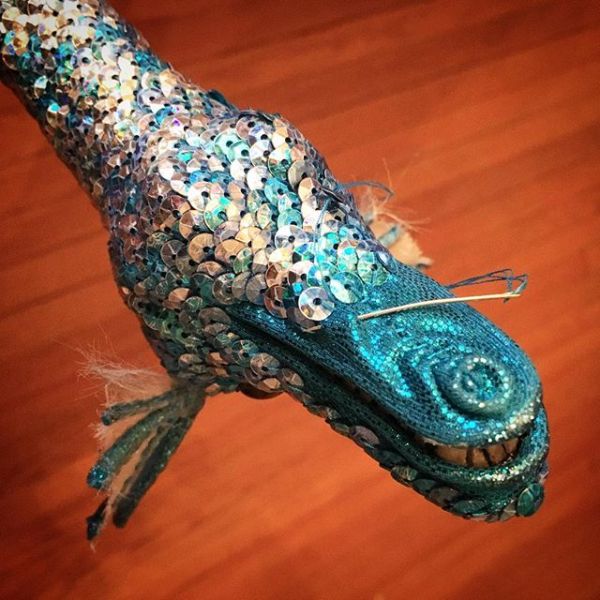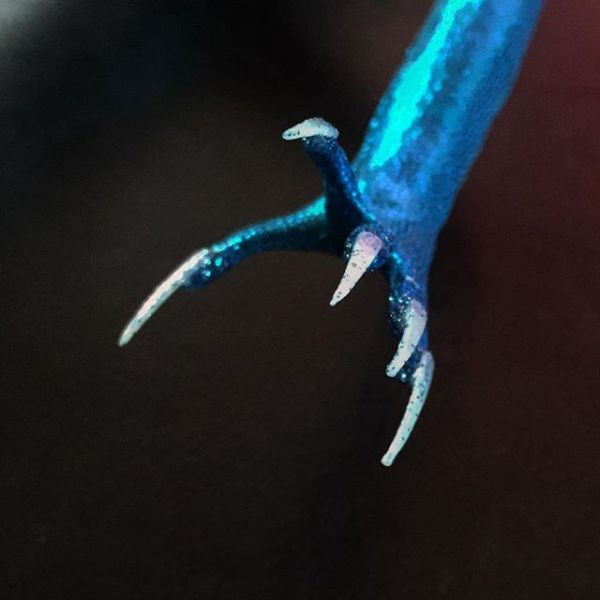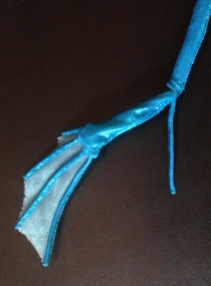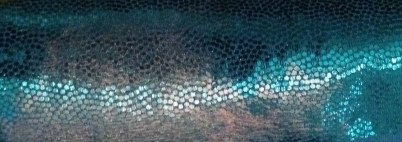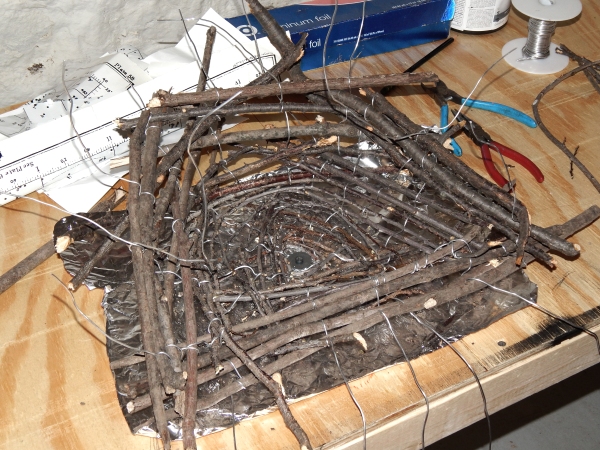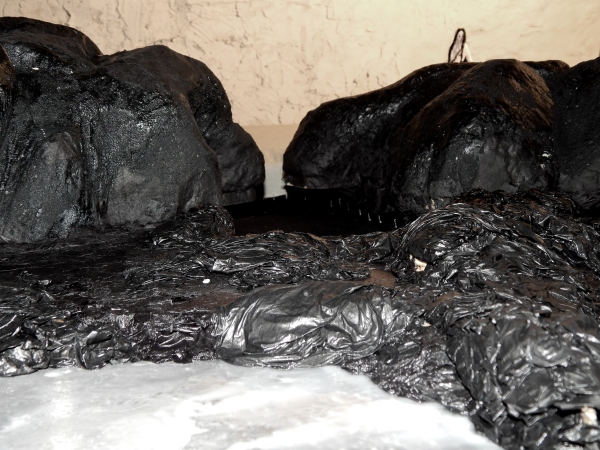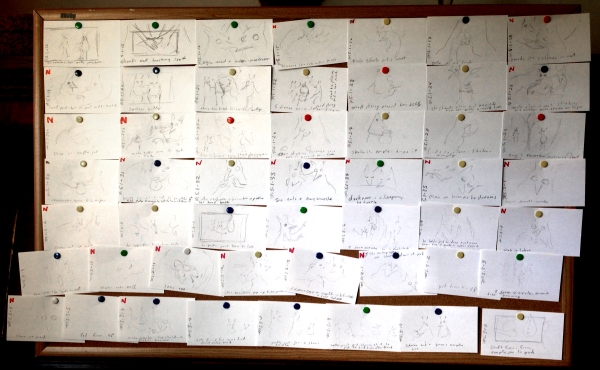I am building the shore of the sand sea here in my Kansas City studio with the help of my two interns, Emma Charles and Adam Hoffsette. We had our first work day on Sunday and I am amazed at how much we accomplished together. And as an added bonus for the blog, they are both better about remembering to document what we are doing than I am.
Here is a sketch of the shore of the sand sea:
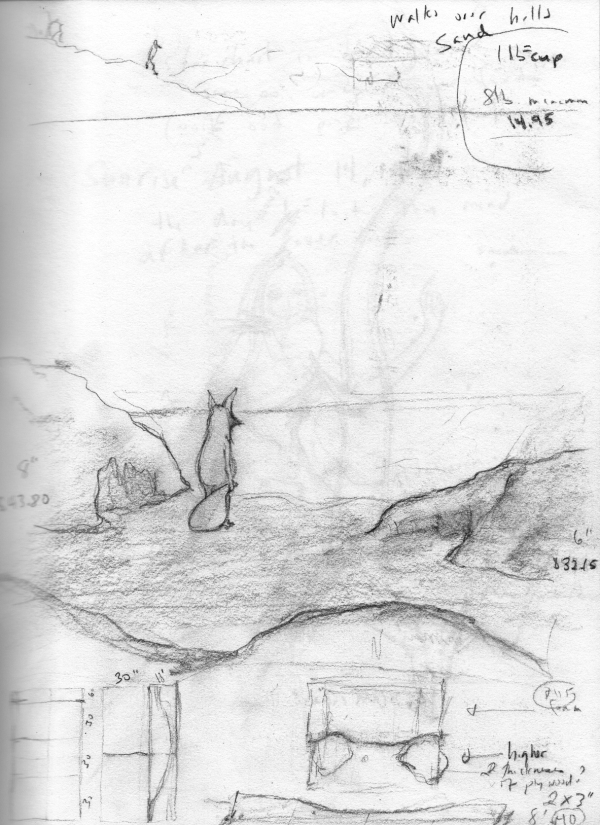
The One stands at the shore of the sand sea.
Detail sketches of the wave generator and set construction plans:
We’ve been working hard to get all of this built and tested. Three tables will support five 24″ x 48″ sheets of perforated steel. This perforated steel is great stuff! It will work for both magnet foot anchors and T-nut foot anchors as well as for my crazy wave generator idea. The only down side is the cost. My generous Patreon supporters are helping to cover part of that. Thank you! I ordered the sheets from OnlineMetals.com.
Photos of us at work:

Adam working on a table.

Emma and Adam working on a table.
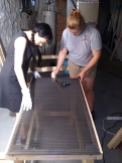
Laying down the perforated metal sheet with Emma. Photo by Adam.

Close up of the perforated metal sheet in place. Photo by Emma.
We tested my wave generator idea and I am very happy with the results. It worked a lot like I had planned and we made some important adjustments to the initial idea. Now I need to buy a lot of little bits of hardware to make it full sized! Note: The cherry print fabric will not be used in the final version. It just happened to be what I had on hand for testing. The final fabric will be the same color as the sand. Emma shot some photos and video of the tests and I edited those together to make a record of our session:

We put spackle on the foam rocks that I had carved and painted the black undercoat. My next step with the rocks is to dry brush grey over that.

The rock in the foreground is bare foam and spackle. The rock i the background is almost finished with it’s black undercoat.

Emma working on the second rock. Photo by Adam.
I purchased 500 lbs of paver sand to use for the sea of sand in May, hoping that it would be dried out by now. That was not the case so Emma spread it out on a cloth in the studio to dry so we can sift out the pebbles. My dog came downstairs to snoop around and decided the sand must be a little bit of outdoors brought inside just for her. She loved it so much she peed on it! I shooed her away quickly and removed the soiled sand.





